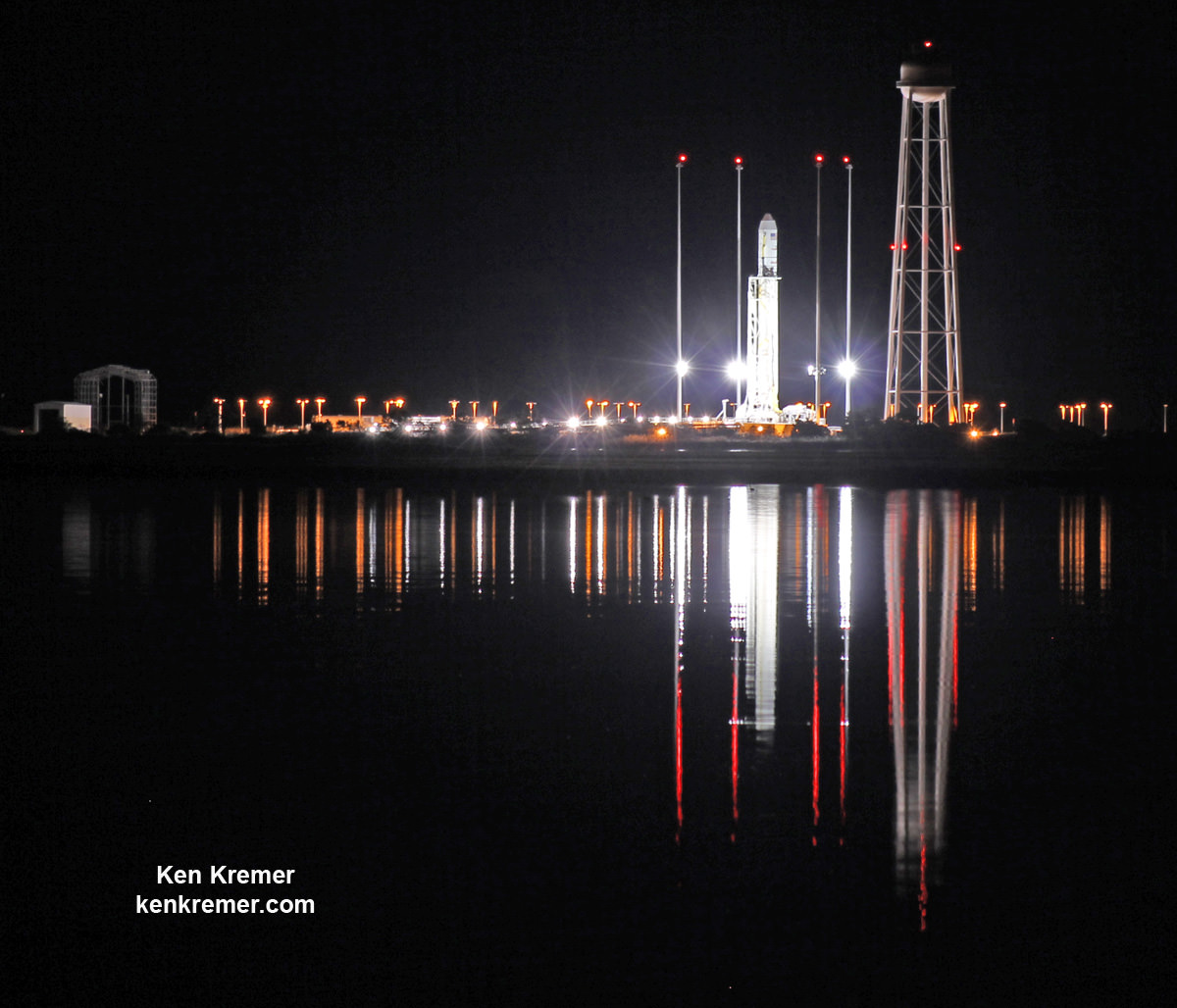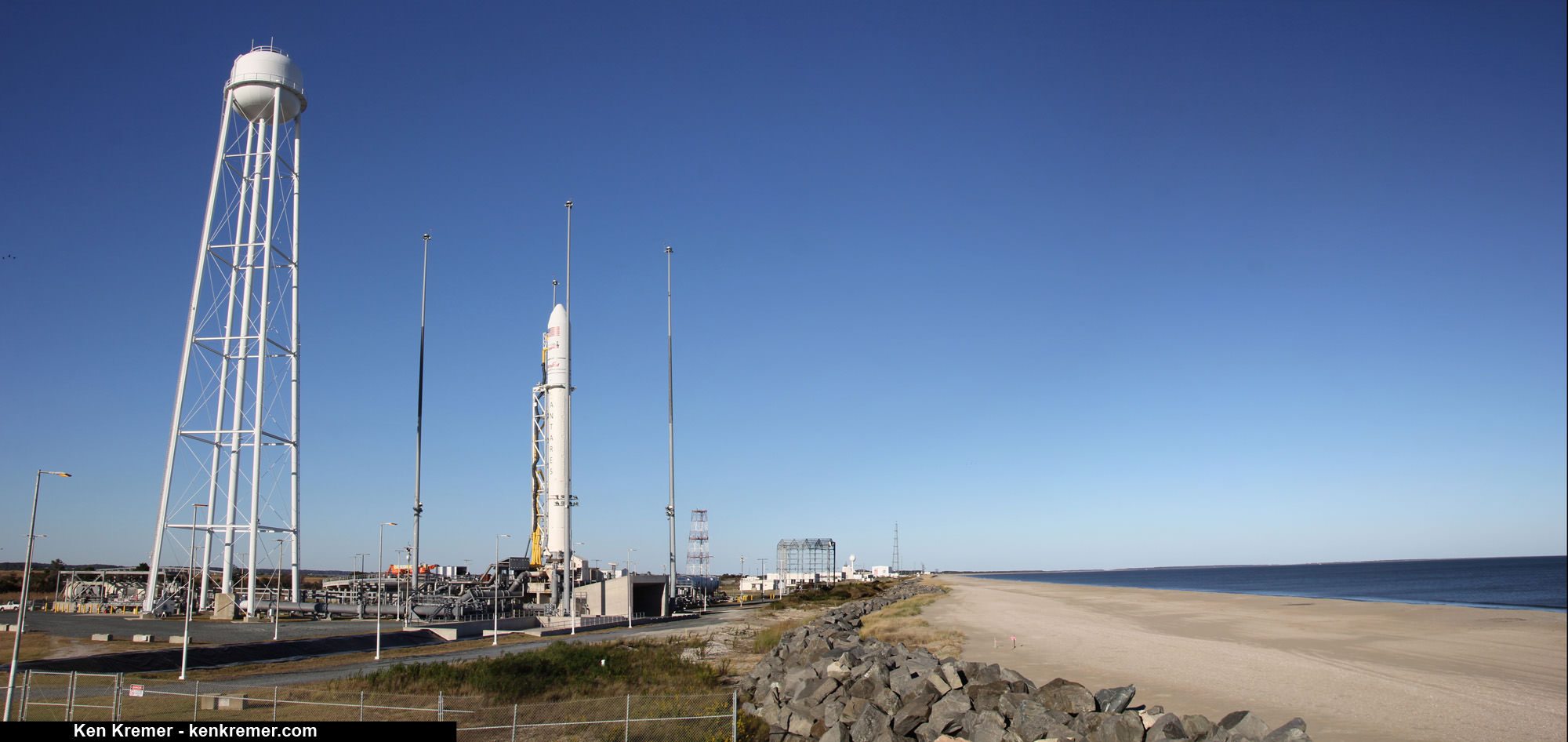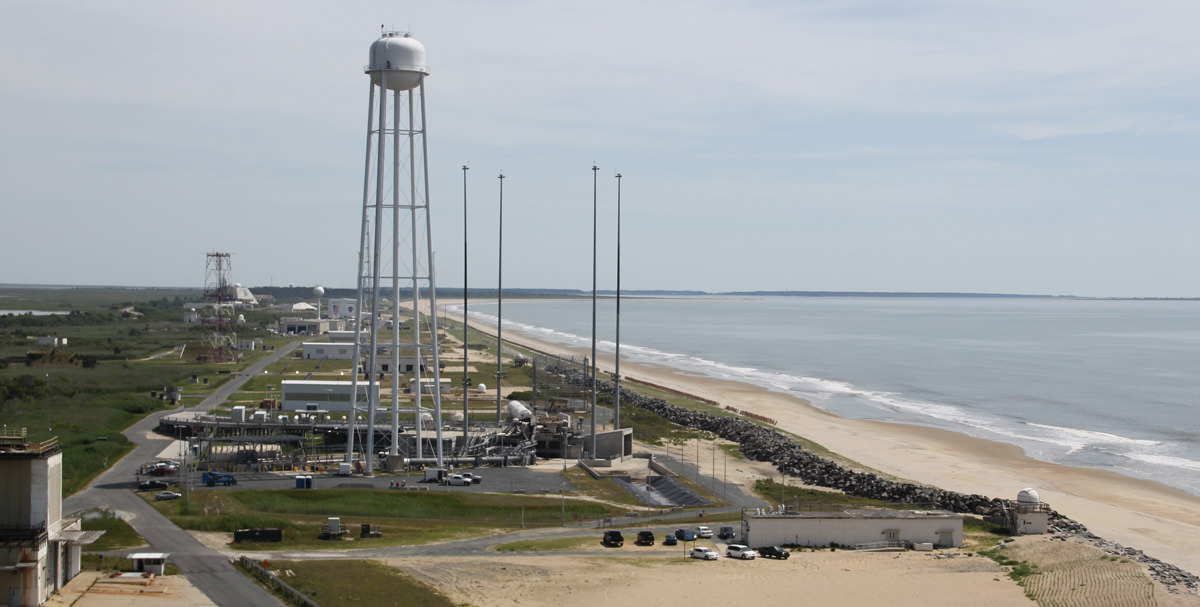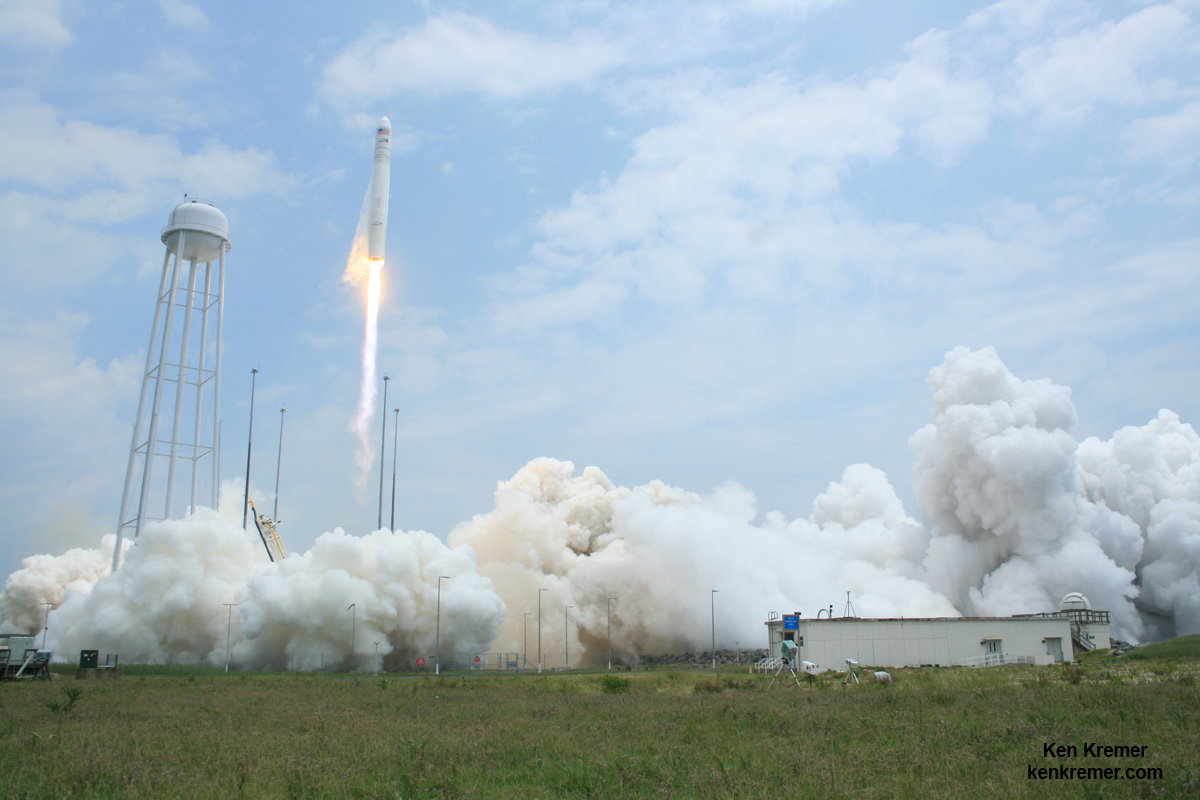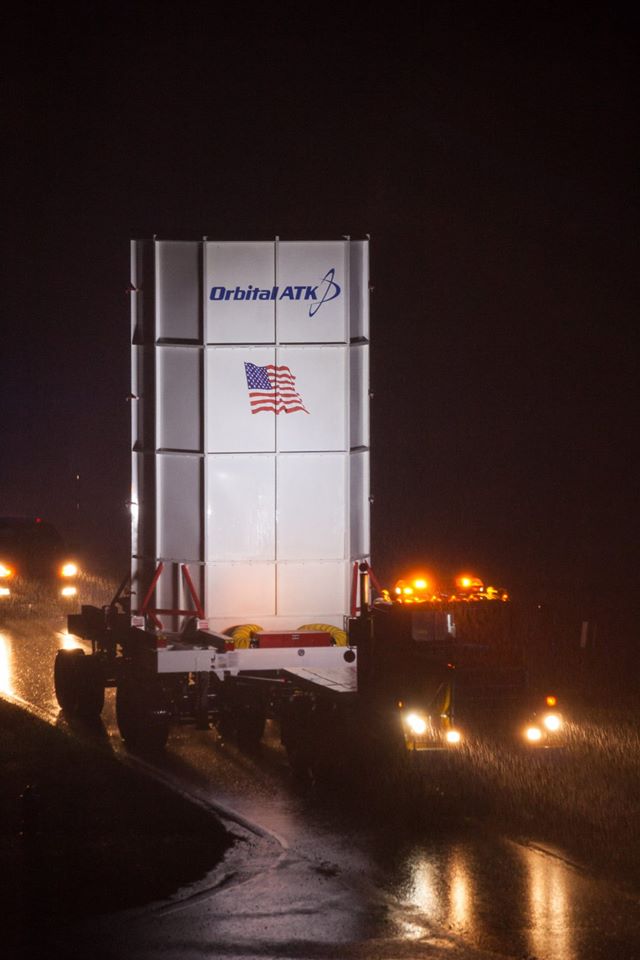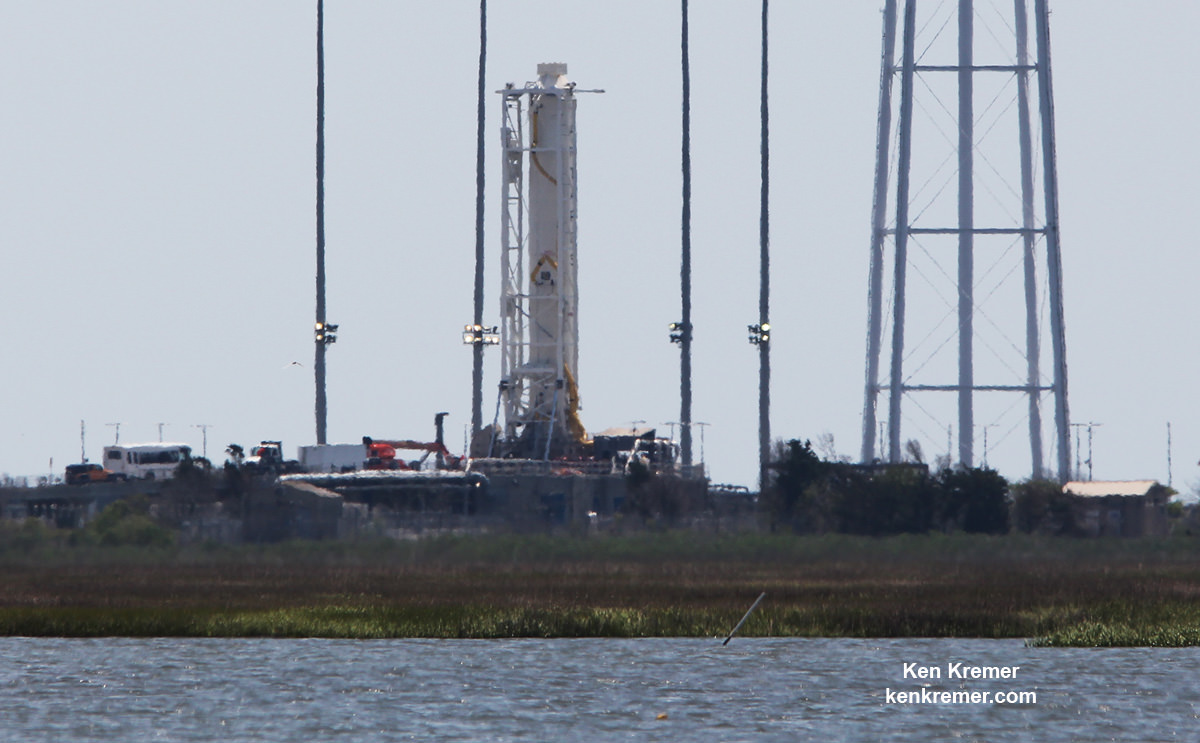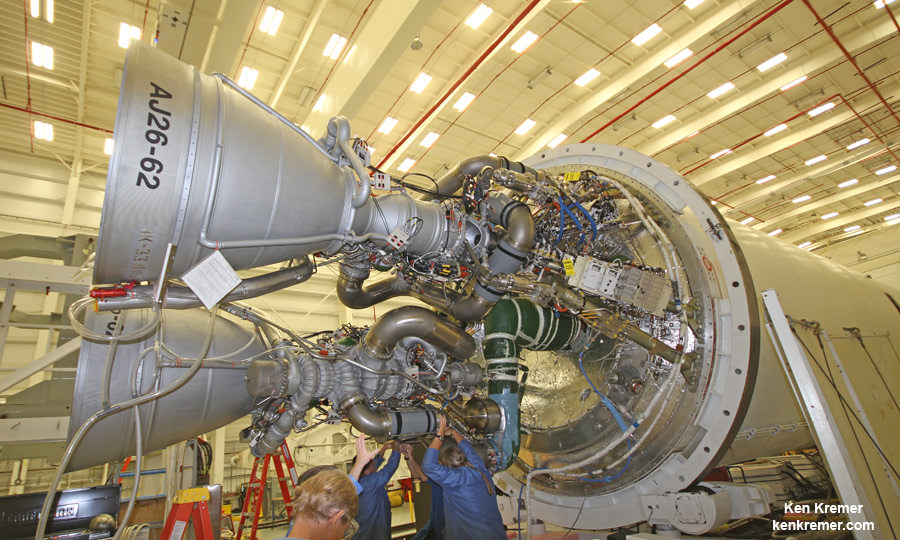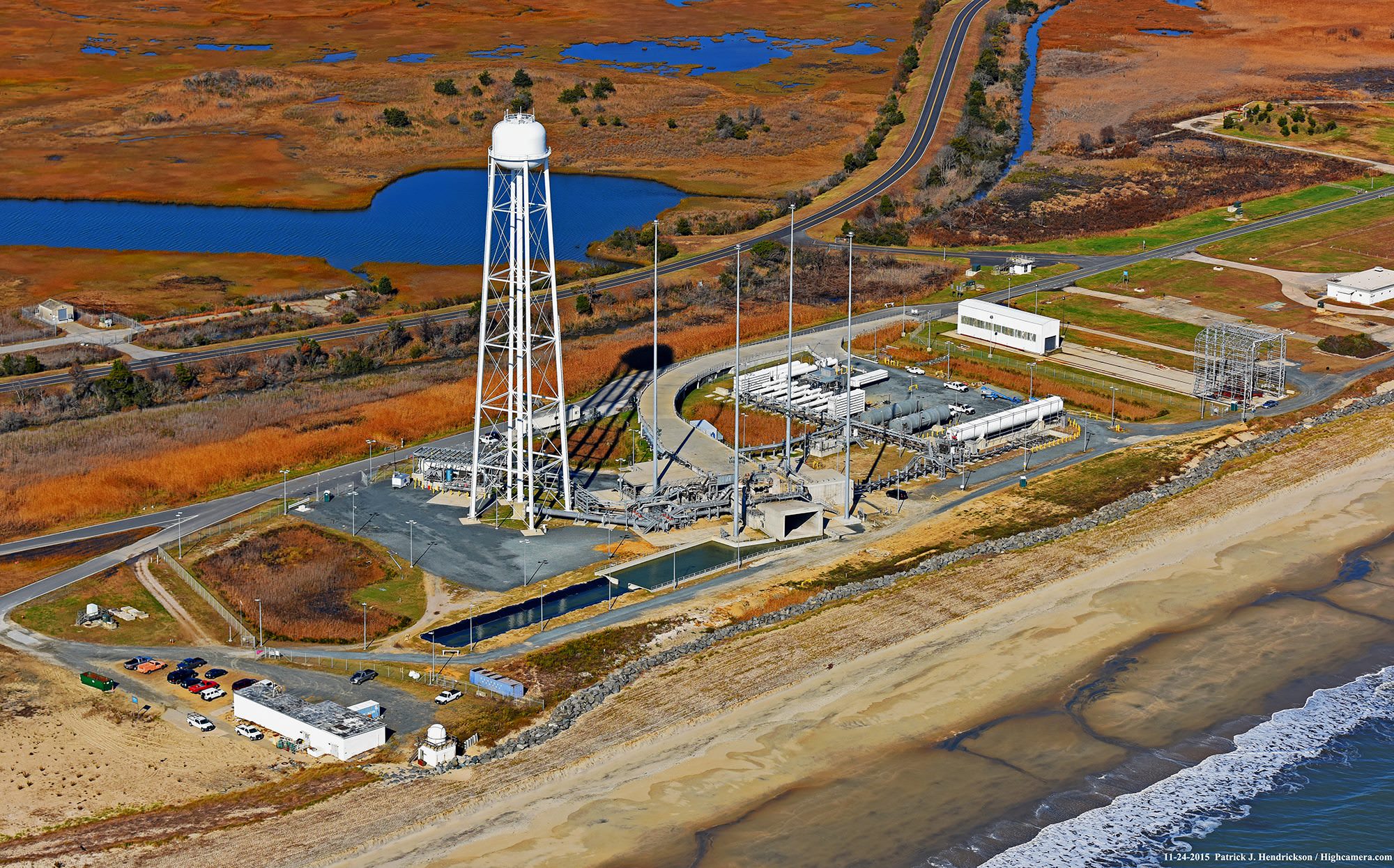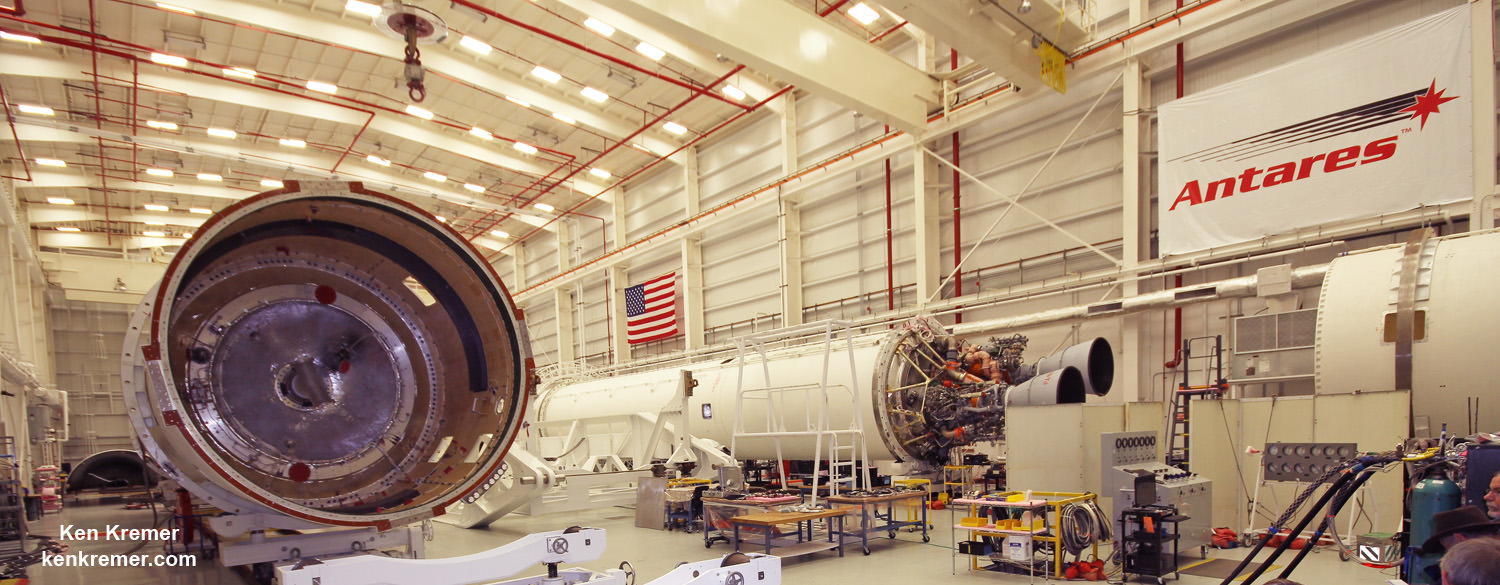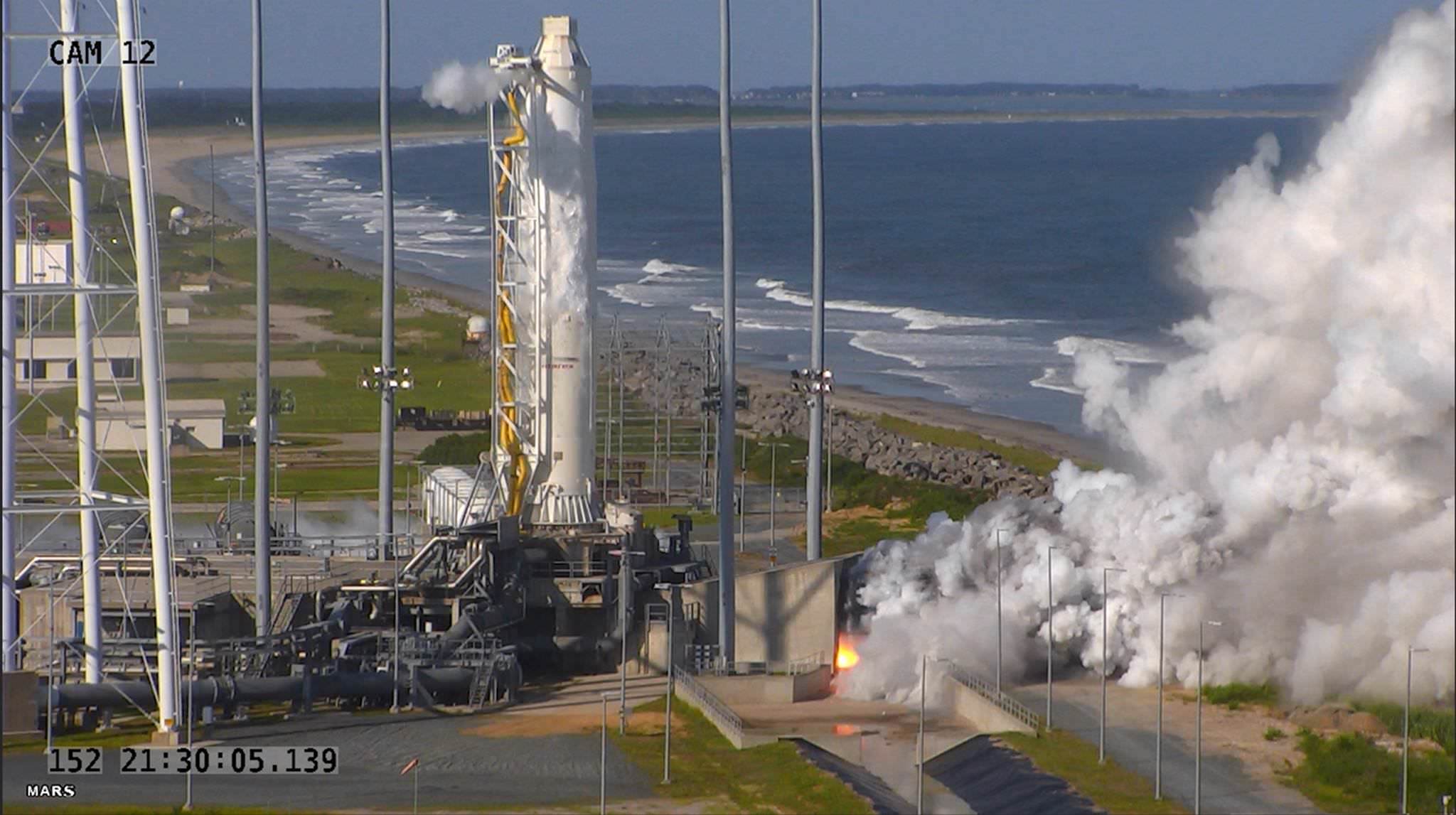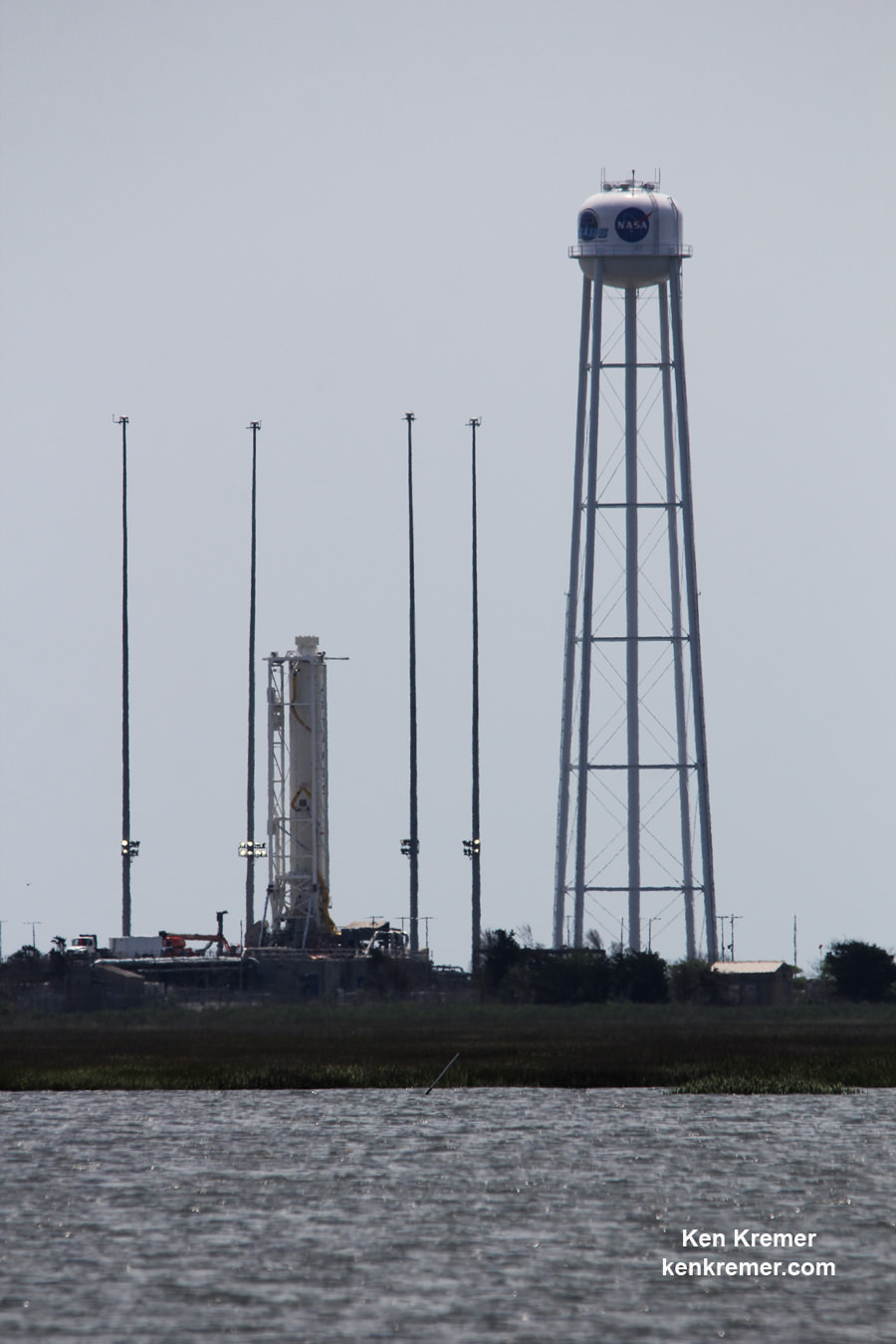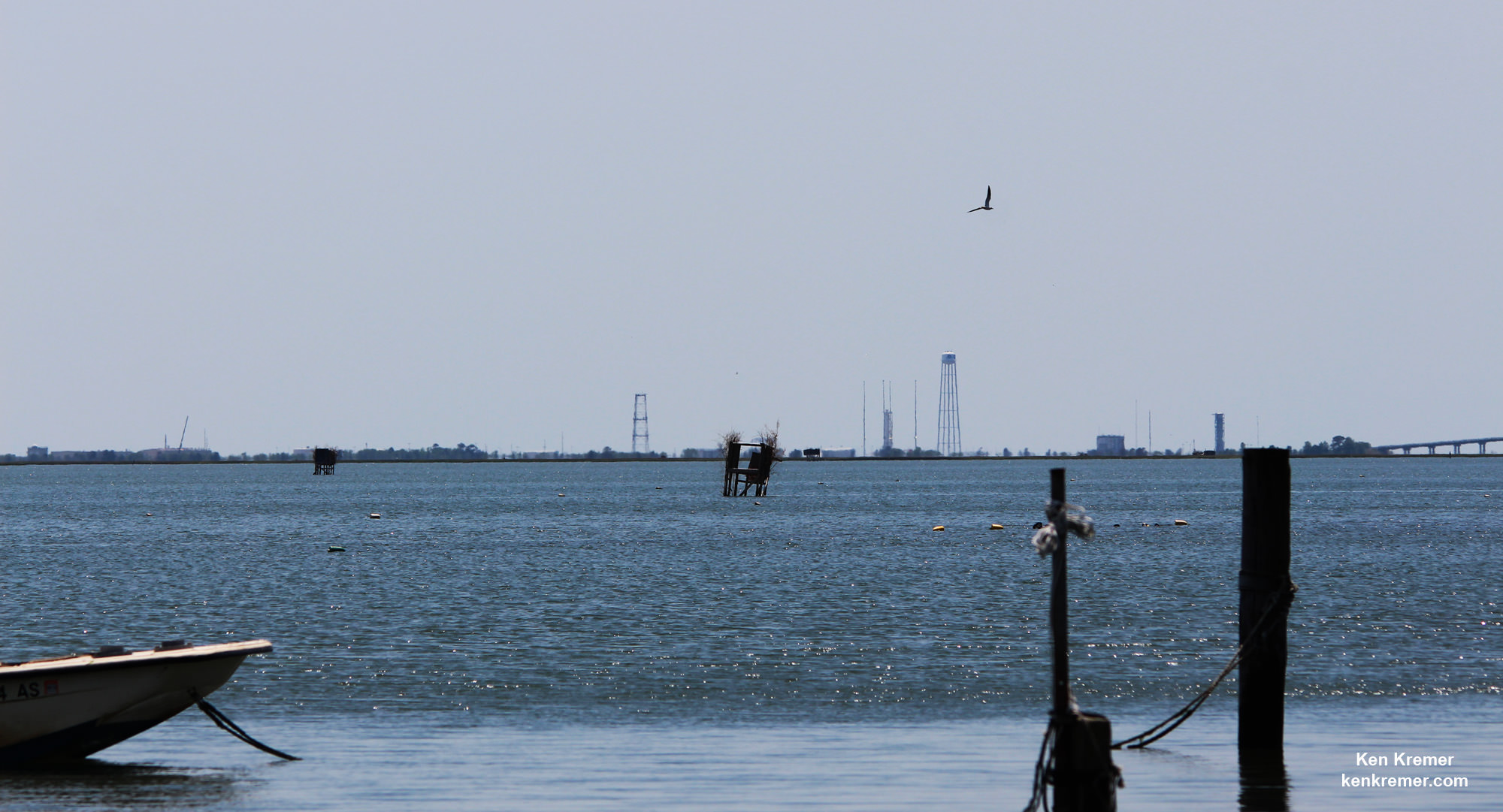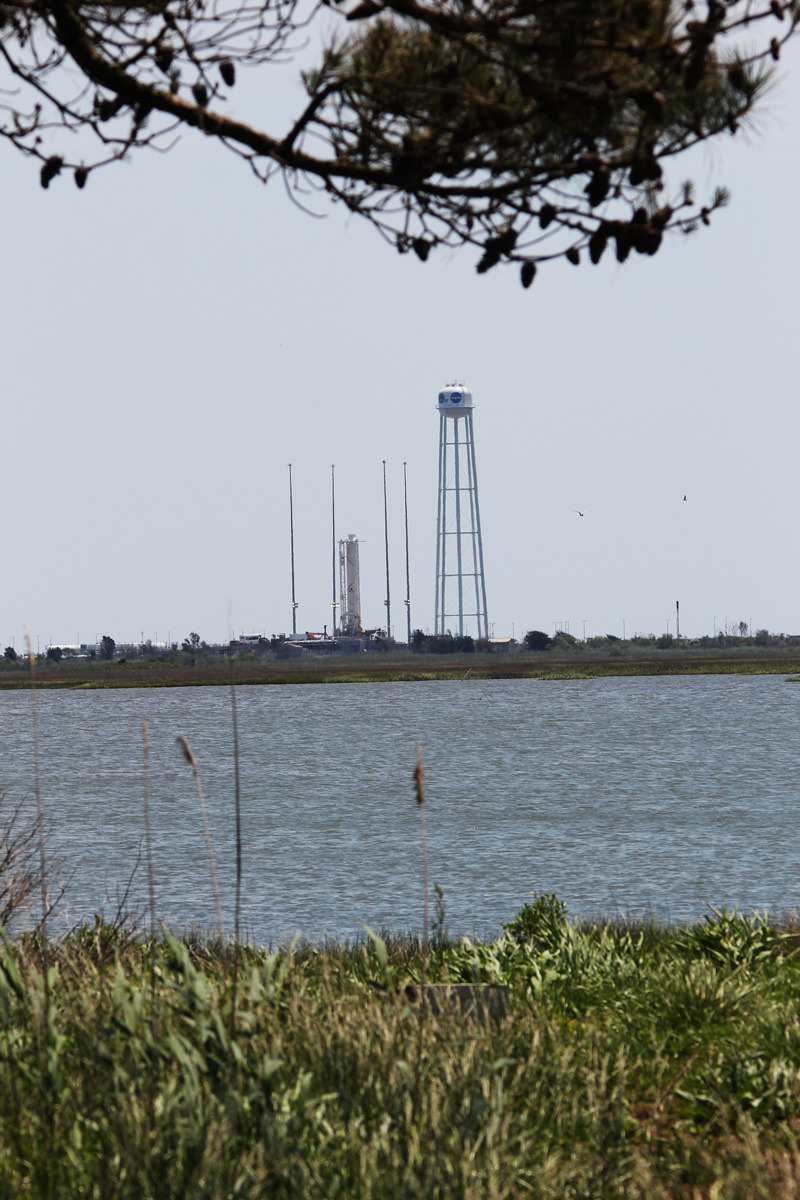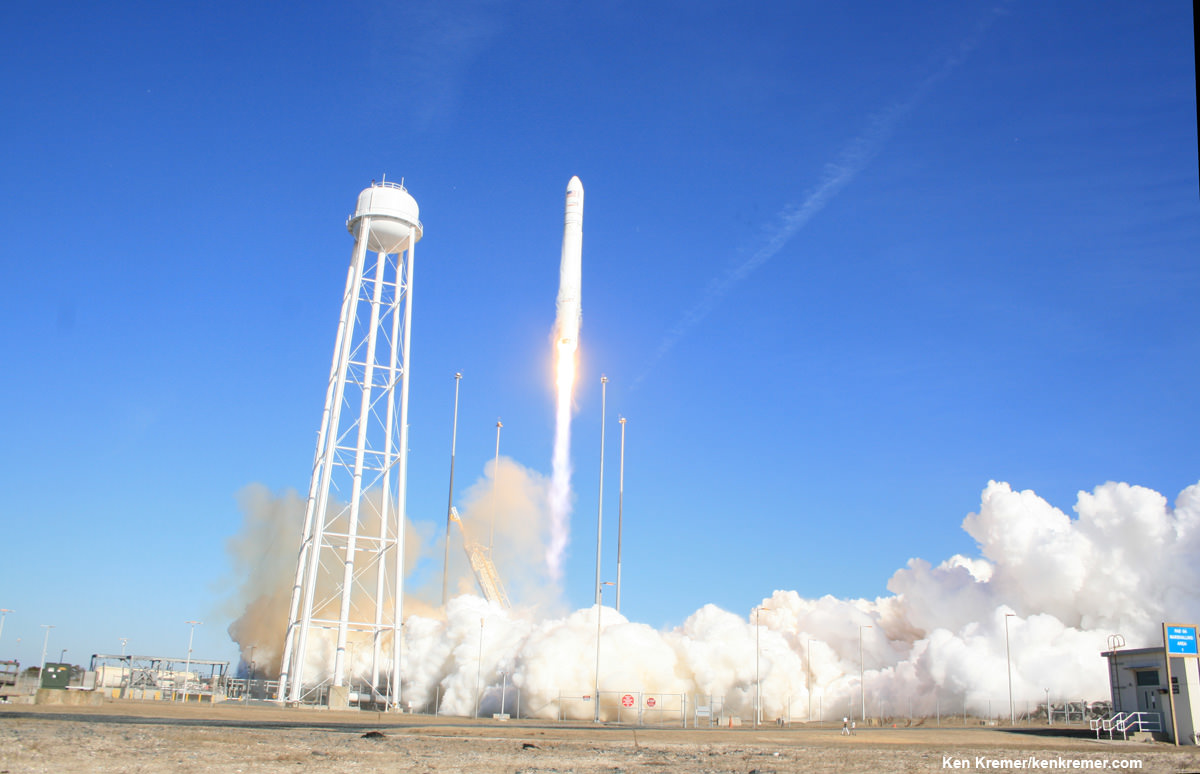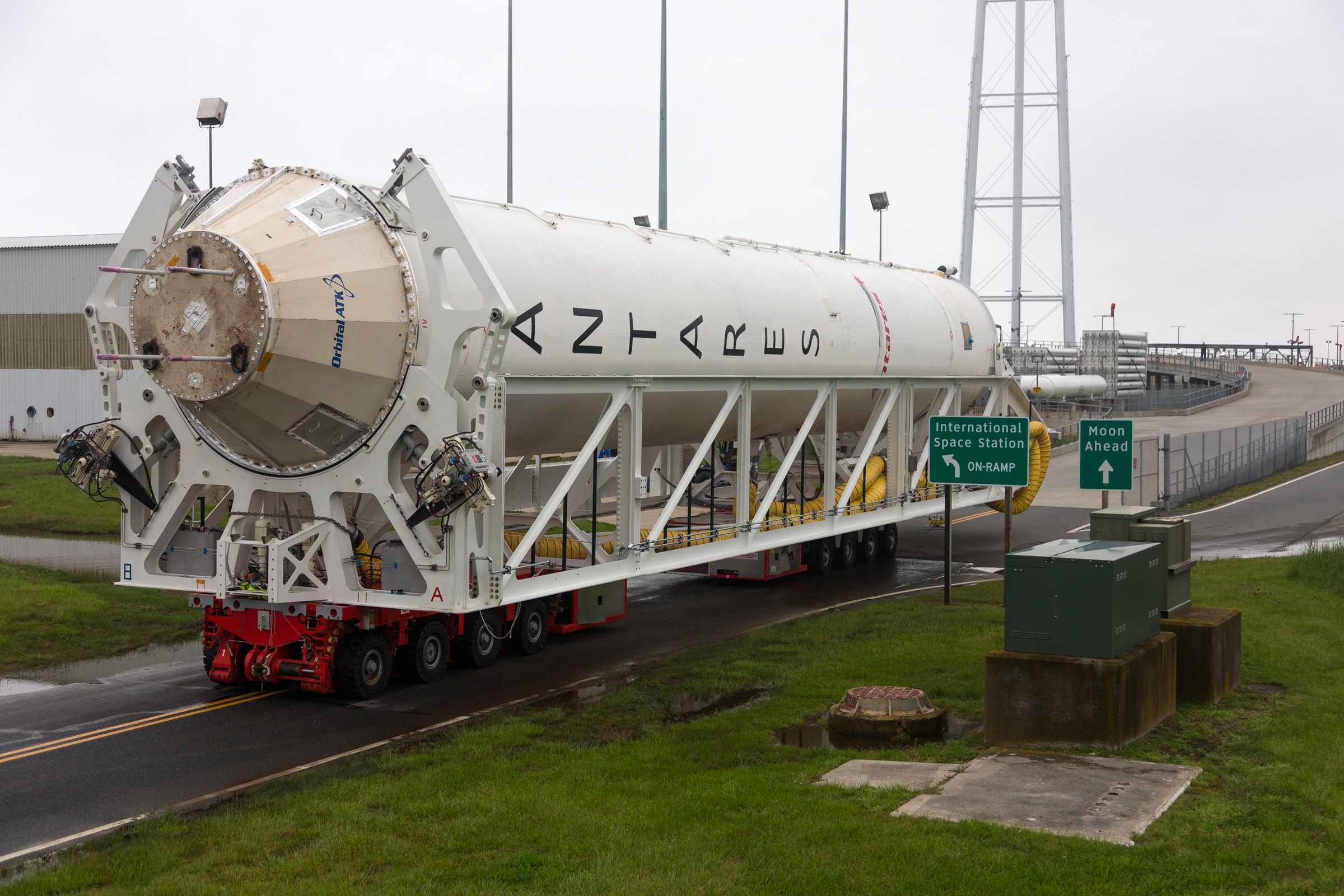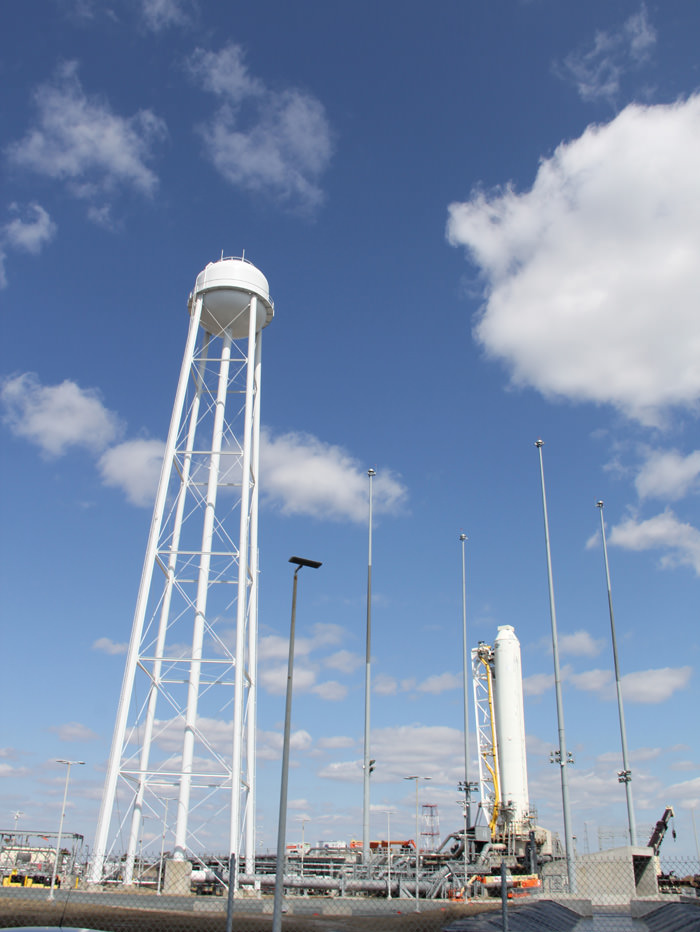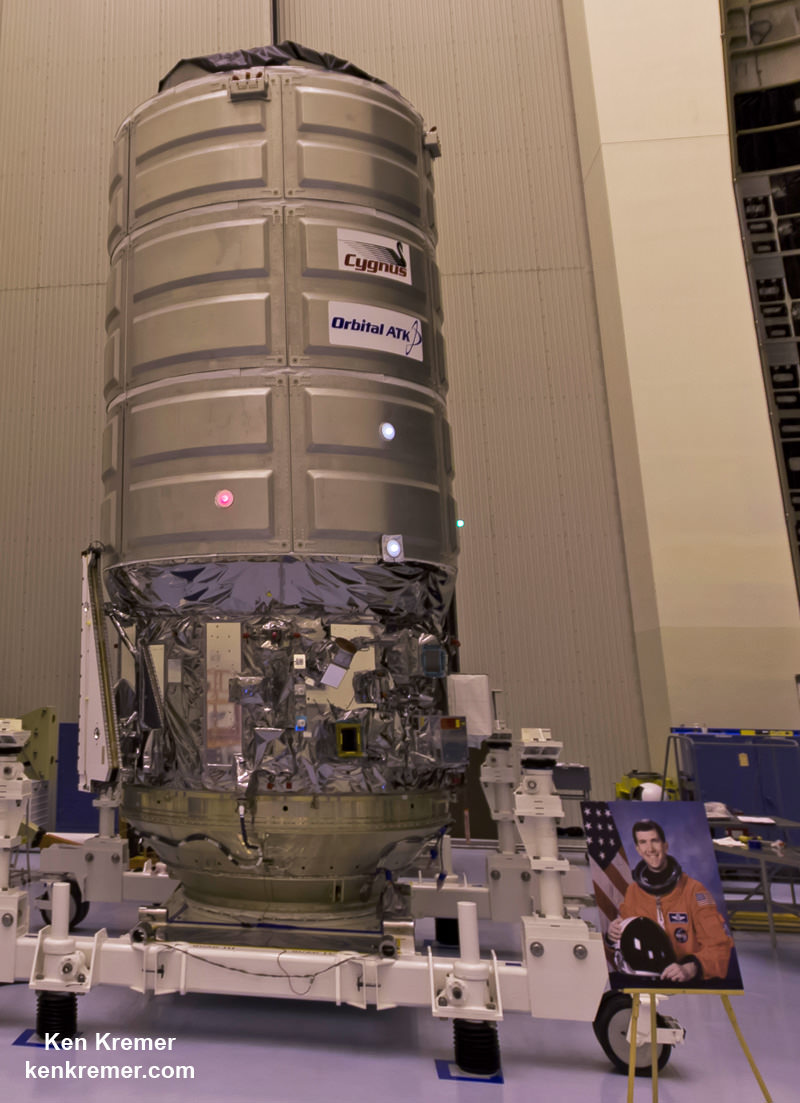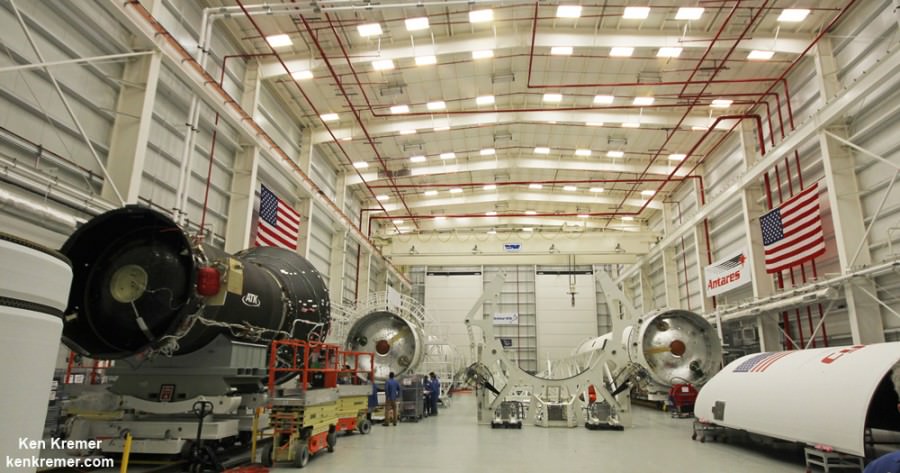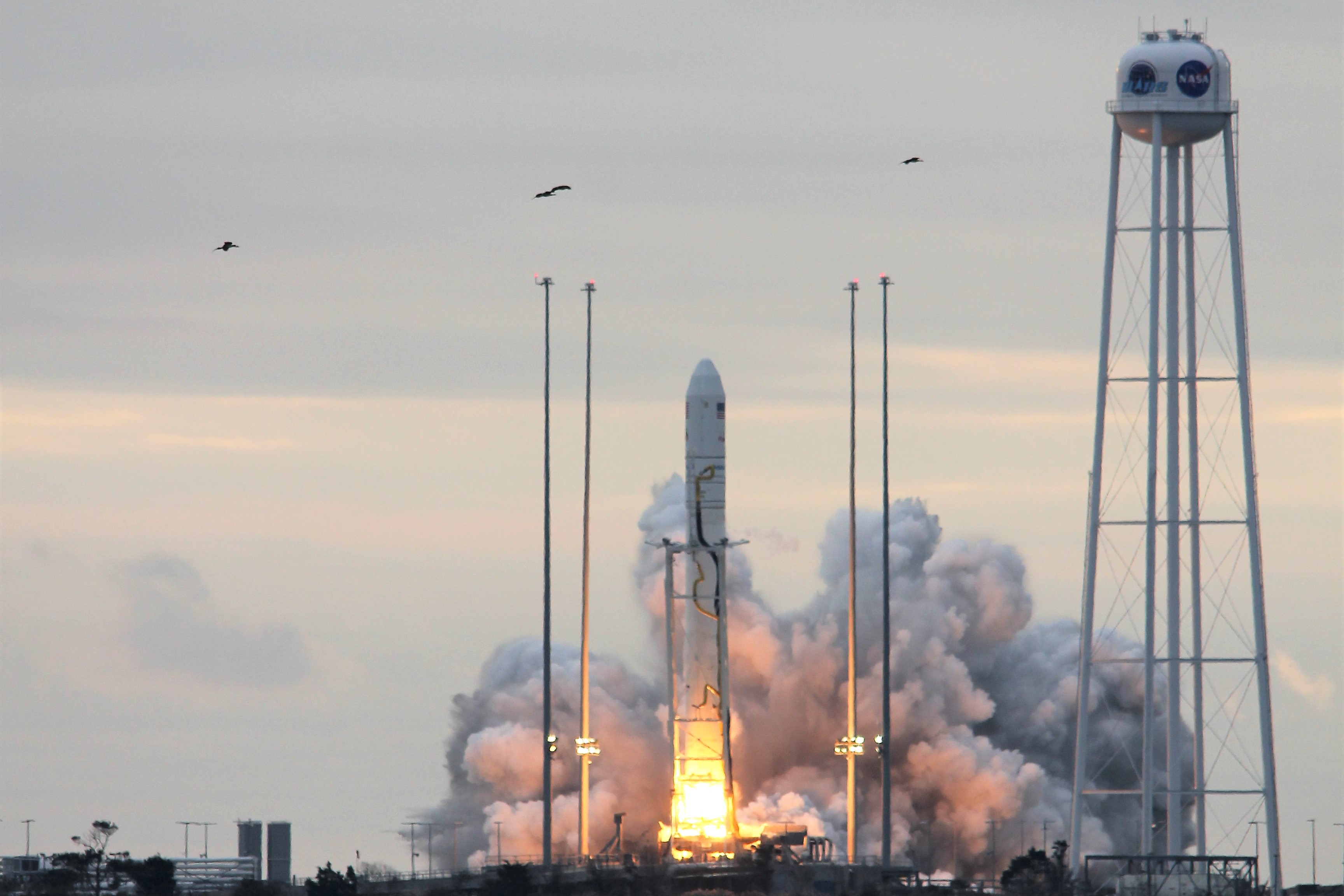
NASA WALLOPS FLIGHT FACILITY, VA – An Orbital ATK Antares rocket successfully blasted off this morning, Sunday, Nov. 12, from the eastern shore of Virginia on a NASA contracted mission bound for the International Space Station (ISS) carrying a Cygnus cargo ship loaded with nearly 4 tons of vital science and supplies.
The two stage Antares rocket launched flawlessly shortly sunrise Sunday at 7:19 a.m. EST, Nov. 12 on an upgraded version of the Antares rocket from Pad-0A at NASA’s Wallops Flight Facility in Virginia carrying the Cygnus resupply spacecraft named in honor of Gene Cernan, the last man to walk on the Moon.
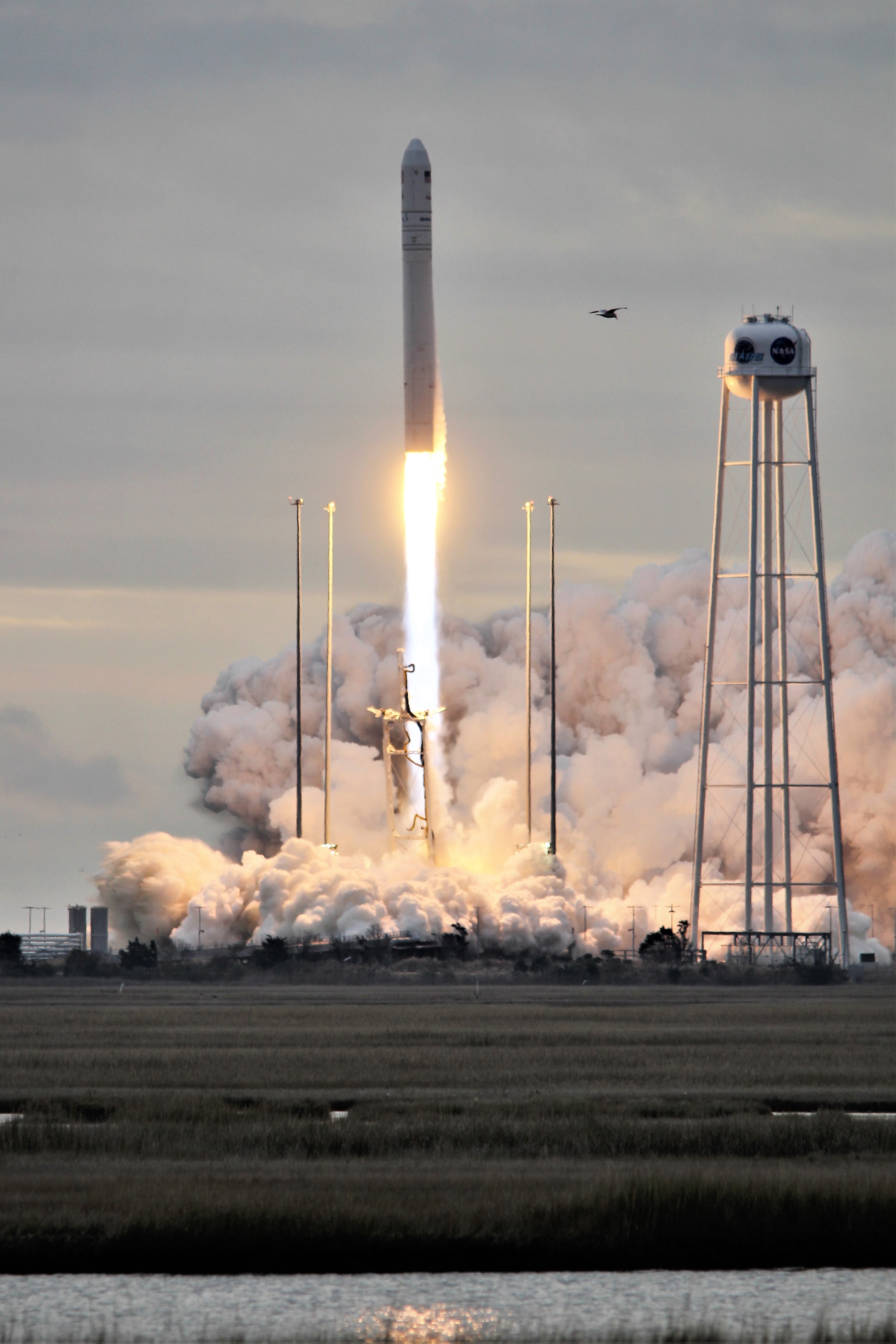
The launch came a day late due to a last moment scrub on the originally planned Veteran’s Day liftoff, Saturday, Nov. 11, when a reckless pilot flew below radar into restricted airspace just 5 miles away from the launch pad – forcing a sudden and unexpected halt to the countdown under absolutely perfect weather conditions.
Finally the rocket roared off the pad Sunday under cloudy skies – to the delight of a spectators, with a brilliant flash of light. Slowly at first and then accelerating almost straight up before arcing over just slightly in a southeasterly direction and soon disappearing into the thick clouds. In fact it was so load that local residents told me their windows and houses shook and rattled.
Saturday’s sudden scrub disappointed tens of thousands of spectators who had gathered around the East coast launch region and beyond for a rare chance to see the launch of a powerful rocket on a critical cargo delivery mission for NASA conducted the benefit of the six person crew serving on the station to advance science for all of humanity.
The pilot may have intentionally flown the plane low enough to avoid detection so he could take photos for profit.
As a result of this extremely serious violation of flight rules which raises significant safety and base security issues the FAA and NASA are now undertaking an intense review of rules after the repeated serious incursions by planes and boats into exclusion zones during launches, and what penalties and fines should be applied.

The Cygnus spacecraft dubbed OA-8 is Orbital ATK’s eighth contracted cargo resupply mission with NASA to the International Space Station under the unmanned Commercial Resupply Services (CRS) program to stock the station with supplies on a continuing and reliable basis.
“Today’s successful launch of the OA-8 Cygnus on our Antares launch vehicle once again demonstrates the reliability of Orbital ATK’s hardware along with our commitment to deliver critical cargo to astronauts on the International Space Station,” said Frank Culbertson, President of Orbital ATK’s Space Systems Group.
“Soon, Cygnus will rendezvous with the space station to deliver valuable scientific experiments, hardware and crew supplies to the orbiting platform. On this mission, Cygnus will again display its flexibility as an in-orbit science platform by supporting experiments to be performed inside the cargo module while attached to the space station. We are proud to dedicate this mission to Apollo astronaut Gene Cernan and his family and look forward to celebrating the OA-8 contributions to science in his name.”
After a two day orbital chase the S.S. Gene Cernan will arrive in the vicinity of the space station early Tuesday, Nov. 14. Cygnus will be grappled by Expedition 53 astronaut Paolo Nespoli of ESA (European Space Agency) of Italy at approximately 4:50 a.m. EST on November 14 using the space station’s robotic arm. He will be assisted by NASA astronaut Randy Bresnik.
NASA TV will provide live coverage of the rendezvous and grappling.
Cygnus will remain at the space station until Dec. 4, when the spacecraft will depart the station and deploy several CubeSats before its fiery re-entry into Earth’s atmosphere as it disposes of several tons of trash.
The 14 story tall commercial Antares rocket launched for only the second time in the upgraded 230 configuration – powered by a pair of the new Russian-built RD-181 first stage engines.
The rocket performed flawlessly said Kurt Eberly, Orbital ATK deputy program manager for Antares, during the post launch briefing at NASA Wallops.
There was only a slight over performance of the Castor XL solid fueled second stage, which was all to the good – as occurred during the first launch of the upgraded Antares a year ago in October 2016 on the OA-5 resupply mission.
Indeed the overperformance of the second stage may allow Orbital ATK to load the Cygnus with an even heavier cargo load than previously foreseen.
On this flight,the Cygnus OA-8 spacecraft is jam packed with its heaviest cargo load to date!
Altogether over 7,400 pounds of science and research, crew supplies and vehicle hardware launched to the orbital laboratory and its crew of six for investigations that will occur during Expeditions 53 and 54.
The S.S. Gene Cernan manifest includes equipment and samples for dozens of scientific investigations including those that will study communication and navigation, microbiology, animal biology and plant biology. The ISS science program supports over 300 ongoing research investigations.
Cernan was commander of the Apollo 17, NASA’s last lunar landing mission and passed away in January at age 82. He set records for both lunar surface extravehicular activities and the longest time in lunar orbit on Apollo 10 and Apollo 17.
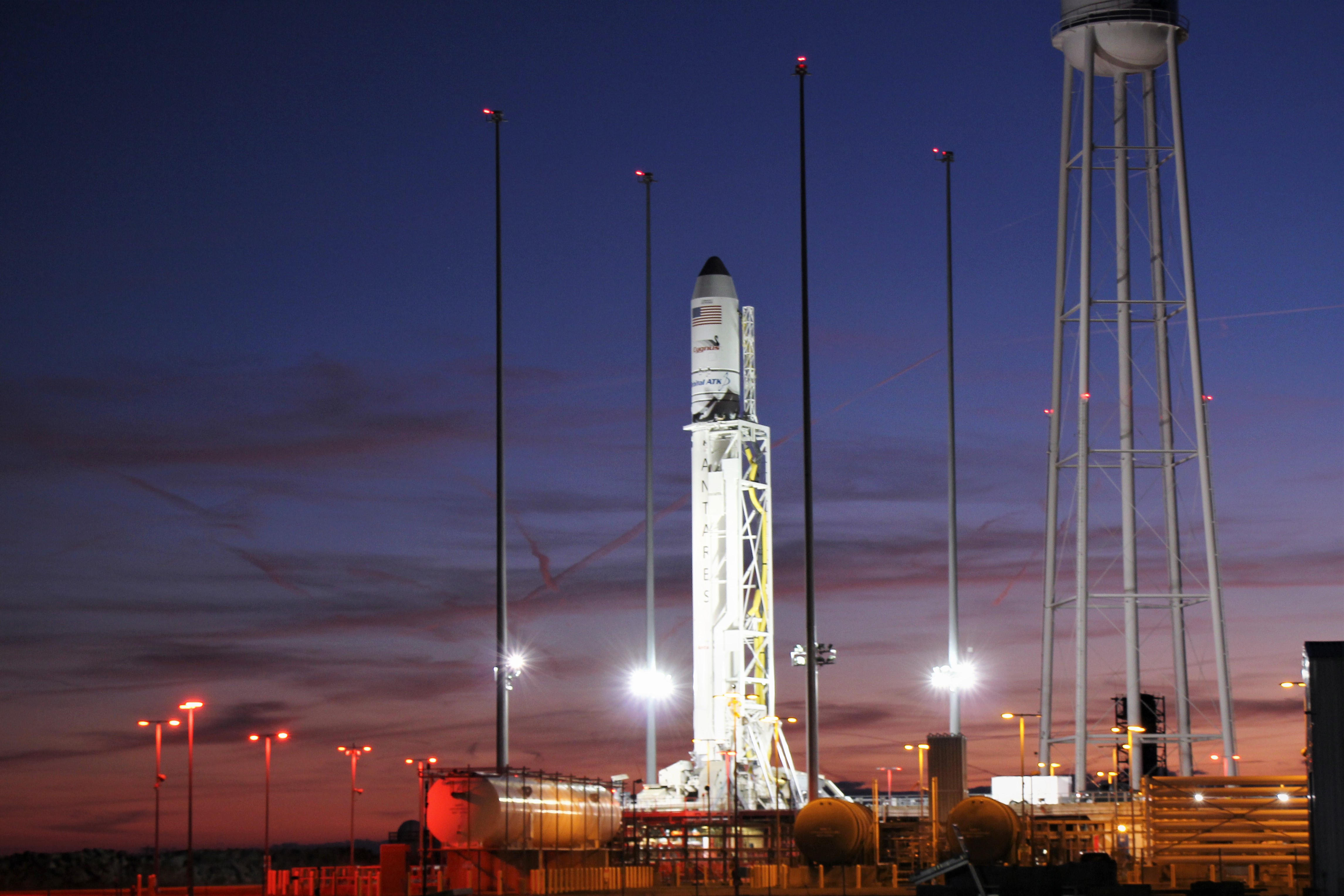
The 139-foot-tall (42.5-meter) Antares rocket had been rolled out to the launch pad around 1 a.m. EST Thursday morning, Nov. 9, and erected as planned into the vertical position, Kurt Eberly, Orbital ATK deputy program manager for Antares, told Universe Today.
The Cygnus OA-8 spacecraft is Orbital ATK’s eighth contracted cargo resupply mission with NASA to the International Space Station under the unmanned Commercial Resupply Services (CRS) program to stock the station with supplies on a continuing basis.
Under the Commercial Resupply Services-1 (CRS-1) contract with NASA, Orbital ATK will deliver approximately 66,000 pounds (30,000 kilograms) of cargo to the space station. OA-8 is the eighth of these missions.
Beginning in 2019, the company will carry out a minimum of six cargo missions under NASA’s CRS-2 contract using a more advanced version of Cygnus.

Watch for Ken’s continuing Antares/Cygnus mission and launch reporting from on site at NASA’s Wallops Flight Facility, VA during the launch campaign.
Stay tuned here for Ken’s continuing Earth and Planetary science and human spaceflight news.

